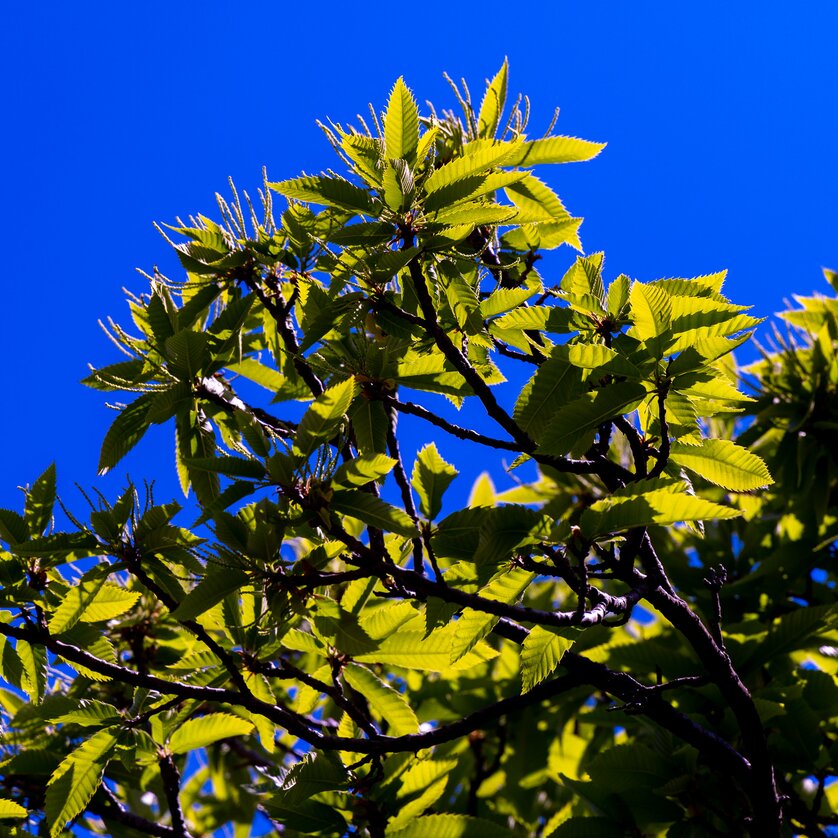Sweet Chestnut
on the Schlossberg in Graz
The sweet chestnut (Castanea sativa) is originally native to South-East Europe, North Africa, Iran and the Caucasus region and was named after the town of Kastana by the Black Sea. The plant belongs to the beech family and was probably cultivated north of the Alps by the Romans more than 2000 years ago. The tree, which can reach a height of up to 35 metres, has yellow-white, pearl-like catkins and bears brown fruits in autumn, which are hidden in spiky envelopes called involucres. The fruit was used as early as the 12th century A.D. in the form of chestnut flour for baking bread and, later on, roasted as a substitute for coffee. Today, chestnuts eaten roasted in autumn are considered a delicacy. As late as the last century, this valuable wood for furniture was also used for vine poles and railway sleepers.





